Our trip in India unfolded between wonders and difficulties. We did a two-week itinerary there (including part of the North and Rajasthan as well as the Mumbai megalopolis) during our world tour.
Departing from Bangkok, Thailand, we first landed in Delhi where we spent two days. Then we went to Agra by train for a 24-hour tour. From Agra, we took another train to Jaipur where we stayed for five days. After an overnight train, we arrived in Mumbai, where we also spent five days. Finally, we left Mumbai where we took a direct flight to the Seychelles islands.
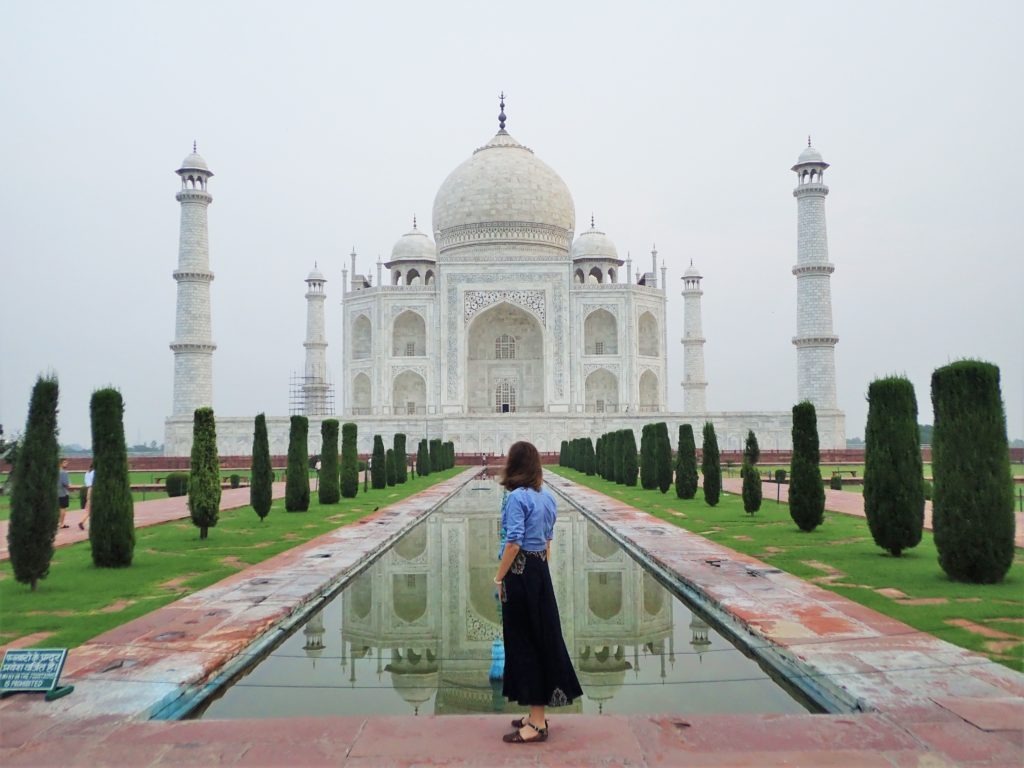
Delhi
The huge city of North India, Delhi, is home to the capital New Delhi. This city was our entry point to India. However, we decided in advance (and following the recommendations made to us) not to stay there long.
Red Fort
After taking a little time to acclimatise to our new environment, we visited the Red Fort. This fortress of Mughal architecture has been on the UNESCO World Heritage list since 2007. We enjoyed the visit, but we didn’t find it extraordinary. The entry queue was much longer for men than for women (sadly we ran into a lot fewer women on the streets in general) and the guards were difficult while searching through Nicolas’ bag and pockets.
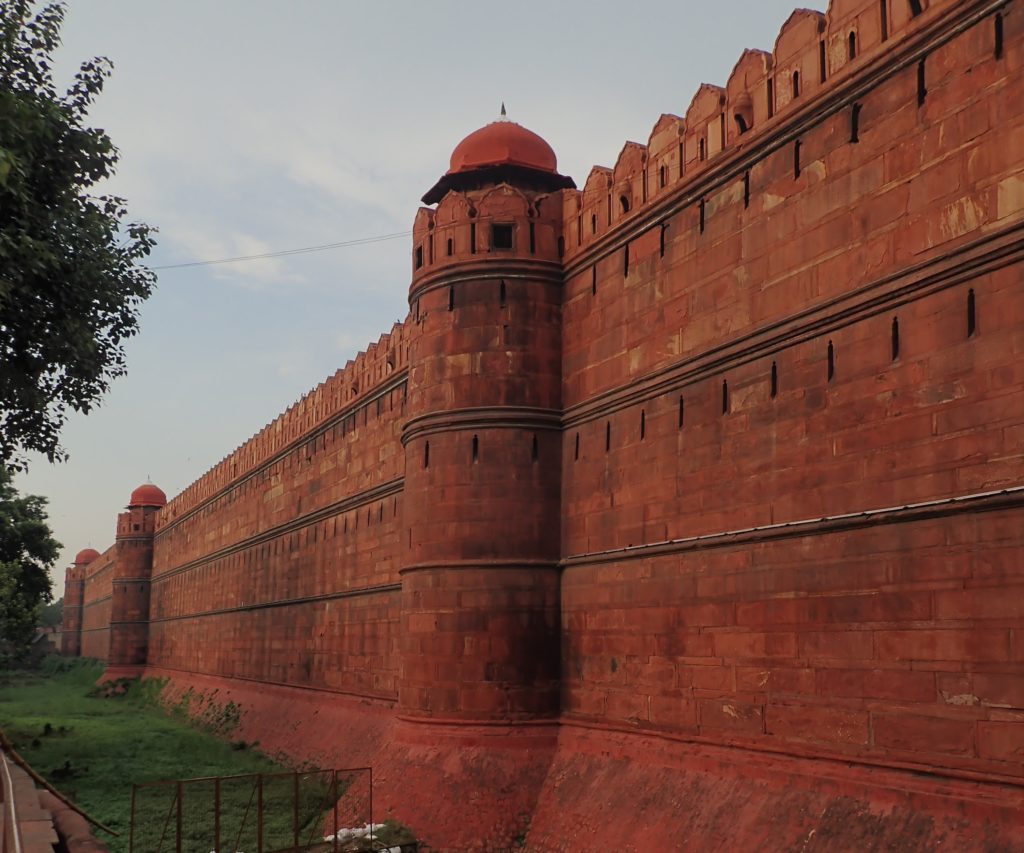
Jama Masjid Mosque
After this, we walked from the Red Fort to the Jama Masjid mosque. For this we crossed the market, an interesting but intense experience, we did not felt very comfortable there. The mosque is superb, entry is free but you will have to pay for the right to take photographs. Do your research before and refuse to pay more than the official price!
It is possible to climb into the minaret for an impressive view of the city. The entrance to the minaret is paid downstairs and you will also have to leave your shoes with a guard before the last staircase for a small fee (we suggest keeping your shoes in hand for the rest of the visit). Be careful, we wouldn’t recommend going up the minaret if you have a fear of heights or claustrophobia. We were tight like sardines at the top of the stairs without guardrails!
We observed a magnificent sunset from the heights of the mosque. However, we must admit that we felt slightly insecure when we got out once the darkness had set in. Access to the mosque is difficult, on the other side of the market is Old Delhi, a neighbourhood so crowded that it is impossible to find a taxi or make an appointment with an Uber driver.
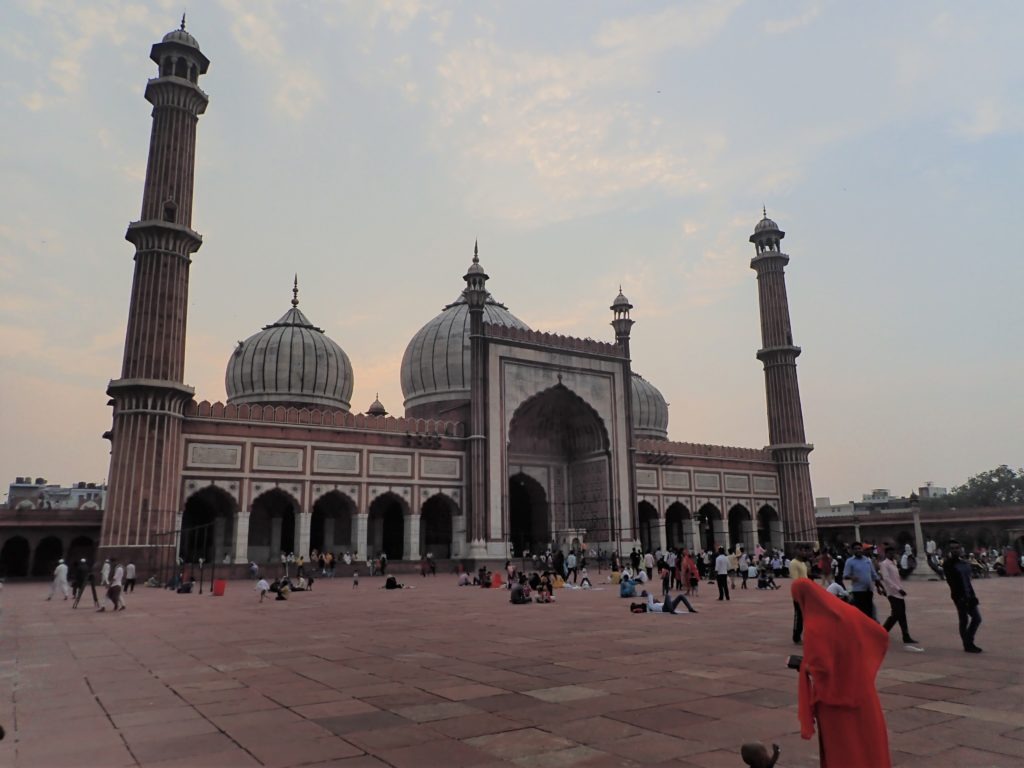
Our recommendations to visit Delhi
For all our tips on visiting India for the first time, see our article.
If you start your trip in India with Delhi we advise you to be accompanied by a local on your first day (or at least half-day). You can for example find a guide or take part in a tour. We regret that we did not opt for this option to make our visit more relaxing.
For transports inside the city, we opted for the Uber application which seemed more secure than taxis on the side of the road. However, we had problems during one of our drive so we recommend that you always be on your guard.
We stayed in a decent and clean Airbnb in the Kalkaji district.
Do not miss to try out as much food as possible in India and find our tips about food on our article. Since butter chicken is famous worldwide, try the original thing in Delhi. Our Indian friend promise the original will blow your mind.
Agra, Taj Mahal city, wonder of the world
The Taj Mahal was one of the main reasons for our desire to visit India. Although there is not much to see outside of the Taj Mahal in Agra, we regretted not having spent another night there. We would suggest to plan two nights, especially if like us you arrive very late at night due to significant delays in transport (a problem not uncommon in India). Even though we did not have time to visit the Agra Fort, it looks magnificent and very interesting. We must however warn you that we have found Agra to be one of the most unpleasant city we have visited in India. Indeed, the tourist flow generates more harassment and disturbances.
We stayed at the Atulyaa Taj hotel which is located nearby and whose terrace with swimming pool offers a very beautiful view of the city and the Taj Mahal. The hotel was very comfortable and clean and the restaurant perfectly fine.
Our recommendations to visit the Taj Mahal
This white marble mausoleum was built in the 17th century by the Mughal emperor Shâh Jahân in memory of his wife. Recognised as one of the Seven Wonders of the Modern World, the Taj Mahal is considered a gem of Mughal architecture. It is a style that combines architectural elements from Islamic, Iranian, Ottoman and Indian architectures.
We advise you to rest well before your visit to the Taj Mahal and to go there for the sunrise. The site will be almost empty and you will have the pleasure of being among the first tourists on the spot (which will no longer be the case an hour later). Online tickets are available from 6 am but the Taj Mahal opens 30 minutes before sunrise. Thus, a ticket for 6 am will give you access to the Taj Mahal 30 minutes before sunrise.
Go to asi.payumoney.com to buy your tickets online. The ticket also gives you the right to a bottle of water, which you must collect when you go to the counter next to the ticket stand, as well as shoe covers (very useful if you want to enter the mausoleum). The site can be visited quickly, but it is very large and since you have the chance to visit a wonder of the world we advise you to stroll there as long as possible. The brightness changes the colours of the facade and it is a magnificent spectacle. The Taj Mahal did not disappoint us! It is such a majestic monument and a beautiful proof of love.
Take only the minimum with you, the rules are very strict. Indeed, we had a small flashlight that we had to leave in the locker room. Finally, be sure to follow the appropriate dress code when covering your legs and shoulders. Pay attention to the monkeys which are often aggressive in touristy places and are grouped at the exit. Do not take out food in front of them!
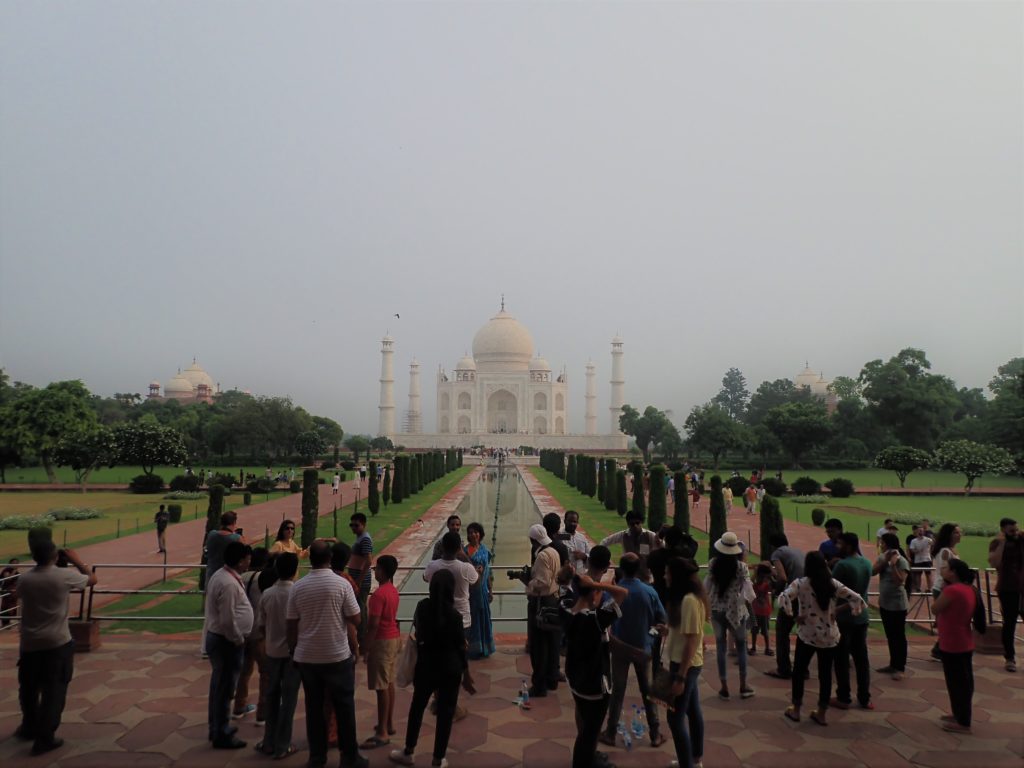
Our train experiences in India
Our departure for Agra from Delhi was the worst part of our journey in India. We waited a long time for our late train before it was cancelled. Unfortunately, we only booked one night in Agra. As we absolutely had to arrive the same evening and the two cities are not so far away, we finally opted for an Uber taxi. Our trip went very badly and it took us twice as long as expected. In the end, the driver extorted more money from us than necessary (find the story of our adventure: World tour news: twelfth month of travel). Three hours after arriving in Agra, we got up frustrated and exhausted to go and fulfil one of our big dreams and visit the Taj Mahal.
We then took a few hours train between Agra and Jaipur. This trip was done without any problem, we were in AC 3 tier. The seats were comfortable enough, the only real annoyance was having to use the toilet. Make your arrangements to avoid the toilets of Indian trains as much as possible!
How to book trains in India
We advise you to book your train tickets online in advance because they get fully booked very quickly. They are available from 60 days in advance. We prefer to warn you, the operation is quite complicated and it could take you up to several hours. We chose the irctc site for our reservations. Before searching for a route, you need to create an account as you will need it to buy your tickets.
To ensure you have a reserved seat, it is better to reserve trains that have availability. If you have no choice, book the seats with the highest probability, there are often waiting lists but when the probability is 90% you take little risk of not validating your ticket in the end. Finally, for the payment, you will be obliged to select the option of international bank card which unfortunately generates costs.
Night trains
The last train we took in India was a 16 hour night train from Jaipur to Mumbai. We booked first class and were fortunate to have a private cabin. It is not possible to choose between a two or four seat cabin. The train was on time but the cabin pretty dirty. The sanitary facilities were luckily cleaner than on the other trains. Meals were not included, plan to buy food before getting on the train. We did not try the food sold on the train which seemed very unappealing to us. Another very special experience but against all odds we slept very well.
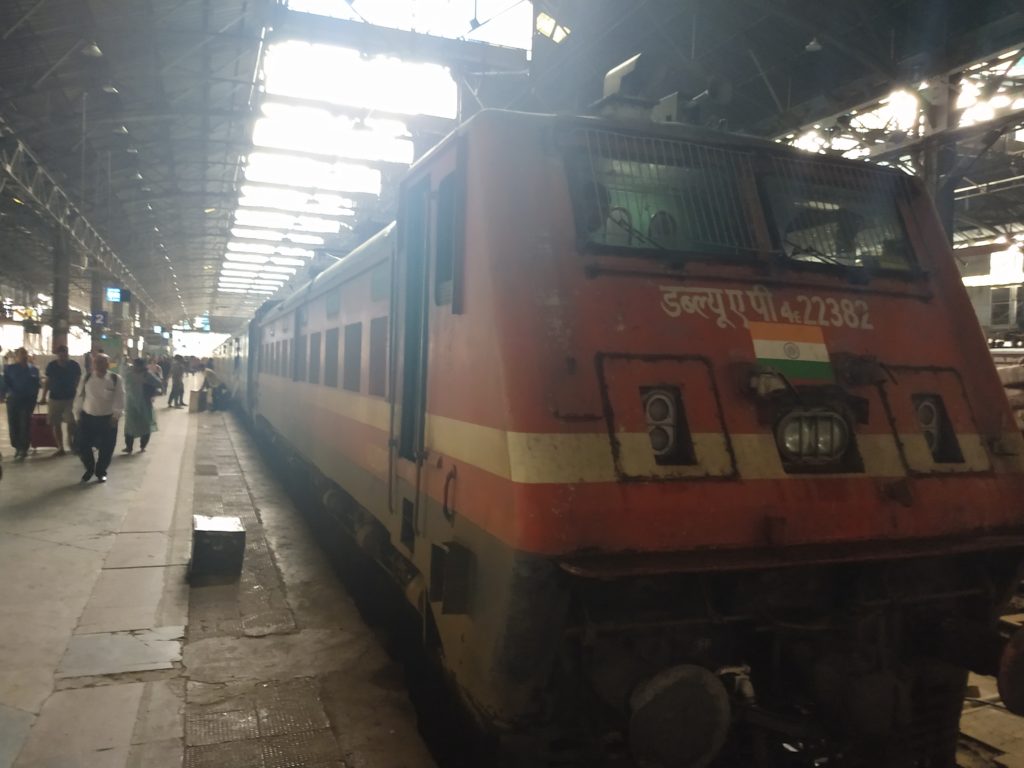
Jaipur, in the heart of Rajasthan
The region of Rajasthan (literally the “country of kings”) appealed to us with its incredible cultural and historical heritage. Several kingdoms made up the country of the Mahajaras before the British Empire took control of India. Jaipur is full of historic places and we were able to visit temples, palaces of royalty, tombs, forts and walls. We were not disappointed with its beauty! We felt transported into the Arabian Nights while visiting maharajas palaces.
Our Rajasthan itinerary was very carefully thought out and changed. Due to the short duration of our visit to India we decided to go to the state capital, Jaipur, as well as to another location. After long hesitations between the other cities which seem magnificent (like Jodhpur, Udaipur, Pushkar or Ajmer) or an excursion in the Jaisalmer desert (quite difficult to access), we decided on the Ranthambore park.
There we hoped to have the chance to see tigers roaming free. To get there we had booked a train between Jaipur and the town of Sawai Madhopur. Finally we had to cancel this part of our visit after realising the Ranthambore park is closed in July, August and September.
What to see in Jaipur?
As explained in our article on how to visit India for the first time, for the visit of Jaipur and its surroundings, we chose to be accompanied by a guide on the first day. We booked with Cyclin’ Jaipur the visit of Amber and Jaipur by tuk-tuk. Here is what we saw:
- The City Palace of Jaipur is a superb visit where we learned a lot about the history of the region.
- The Yantra Mandir astronomical observatory, which dates from the 16th century and is made up of many fascinating measuring instruments.
- The tomb or cenotaph of Gaitor Ki Chhatriyan where the ancient kings of Jaipur are buried.
- The Jal Mahal or floating temple, which we observed from afar because access is prohibited.
- The Anokhi Museum of Hand Printing located in a restored haveli. This interesting museum is dedicated to the art of pad printing, from ancient traditions to contemporary design. We were able to try a fabric print for ourselves.
- The Stepwell, in Amber, is an incredible architectural monument still used to collects water. You will have already seen it in many photos and even in movies!
- The Amber Fort, also known as Amber Palace, includes what has been the residence of Rajput maharajas and their families for centuries.
- The Fort Jaigarh which offers a superb view of Amber, its walls and its fort.
Responsible tourism towards animals: do not ride on elephants!
In Jaipur and Amber you may be offered activities involving elephants. We strongly condemn the ill-treatment of animals linked to tourist activities. Riding on the back of an elephant is an inhuman act, the training conditions are always very violent and terrible. Other activities with elephants (swimming, feeding them, etc.) are also in the vast majority of cases very harmful and to be avoided.
Likewise, be very vigilant and do your research for all other activities with animals in India: camels, horses, snakes, monkeys …
This recommendation actually applies to any destination!
We had a great day thanks to our guide, we highly recommend booking with Cyclin’ Jaipur. We also had the chance to share a delicious meal cooked by the mother of our guide directly at his home. An experience that we highly recommend.
After this excellent day we decided to call on our guide from Cyclin’ Jaipur for an additional day. We did a guided walking tour of the old Jaipur (called the Pink City). The facades of the city centre were repainted during the visit of the Prince of Wales. That is the reason why the neighbourhood is nicknamed Pink City. We started the tour with a view of the Palace of the Winds facade (Hawa Mahal). Then we went to a Hindu temple during prayer time.
After, we followed our guide in the frenzy of the flower, fruit and vegetable market, then in the workshops of marble sculptors and the eclectic back kitchens of some shops. We also tasted the local street food and strolled through the alleys while observing the old houses. A very rich experience that we recommend doing with a guide (so as not to get lost). Alone, we could never have accessed in so many places.
Finally, following our guide’s recommendations, we went to the Nahargarh Fort (nicknamed Tiger Fort). To get there without breaking the bank on a long taxi ride, go to the foot of the mountain at the Nahargarh Palace Hotel & Restaurant and finish the climb by foot (about 45 minutes). From there you can enjoy the sumptuous view of Jaipur, the limits of which are difficult to see. You can also explore the fort, its beautiful stepwell and its surroundings.
Ayurveda, Indian medicine
Ayurveda is an ancient system of Indian medicine, classified as an alternative medicine. This medicine attracts many tourists who come to retreat for several days or weeks. The aim is usually to treat particular chronic pain or stress related issues.
During our stay in Jaipur we wanted to try a massage in an Ayurveda medicine centre. We went to the Kerala Ayurveda Kendra centre of Dr. Mahendra Sharma.
We benefited from the Abhyanga massage with aromas from a blend of essential oils. One of the best massages of our life! We were together in a room separated by a curtain (with masseurs of our own sex, India obliges) and our personal effects stored under keys. The room was nicely decorated and the centre very clean. It is possible to shower on site at the end of the massage.
The centre also offers different programs going from one week to one month. It is also possible to arrange personalised programs, some with yoga and meditation. Accommodation is available on site, we visited the rooms which are very comfortable. Moreover, the centre also offers on-site and online training.
To book: +919314643574 or +918740000855 (you can write on WhatsApp), by email: kayurvedakendra@gmail.com or their website: ayurvedatrainingcoursesindia.com.
Finally, if you want to experience cinema in India and the famous Bollywood films, you must go to the Raj Mandir cinema which would apparently be one of the best. Unfortunately we missed our chance twice. The first time the tickets were already sold out and the second time it was an American film, we came for Bollywood, not Hollywood. Choose a popular Indian movie and remember to book your tickets in advance.
Where to sleep in Jaipur?
We chose to stay at the Laxmi Palace Boutique Hotel ideally located between the train station and the pink city. We very much enjoyed our stay at this hotel and took advantage of its swimming pool and restaurant.
Where to eat in Jaipur?
The restaurant of our hotel (Laxmi Palace Boutique Hotel) offers a wide variety of dishes and they are all delicious, so we ate a lot on site. However, we have another recommendation: the Peacock Rooftop which will offer you a magnificent sunset over the city.
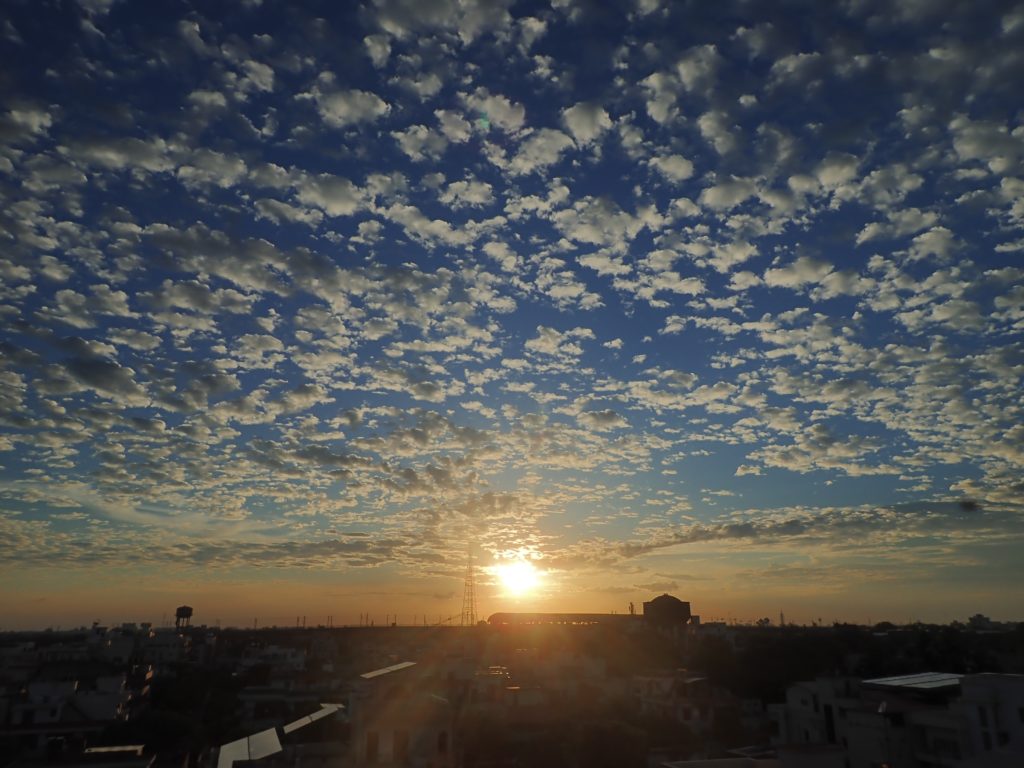
Mumbai (formerly Bombay), capital of Bollywood
Mumbai tour
In Mumbai (formerly named Bombay), we booked an excellent introductory city tour with Mumbai Magic. We were also fortunate to be greeted by friends of friends who introduced us to Mumbai and its surroundings. However, compared to Agra, Jaipur and Delhi, we found that walking around Mumbai was much easier. There are sidewalks, traffic is a little better organised and we had to face less stares.
Thus, we discovered the city with Mumbai Magic and their great Mumbai Local tour. We got around like locals starting from the Gateway of India where we learned more about the origin of the city and history. During a walk in the British Heritage District, we passed the Chhatrapati Shivaji Maharaj Vastu Sangrahalaya history museum and the University before taking the bus to visit Gandhi’s house. This visit allowed us to learn more about this important man in the country’s recent history. Our favourite part was eating the delicious snacks at Swati Snacks.
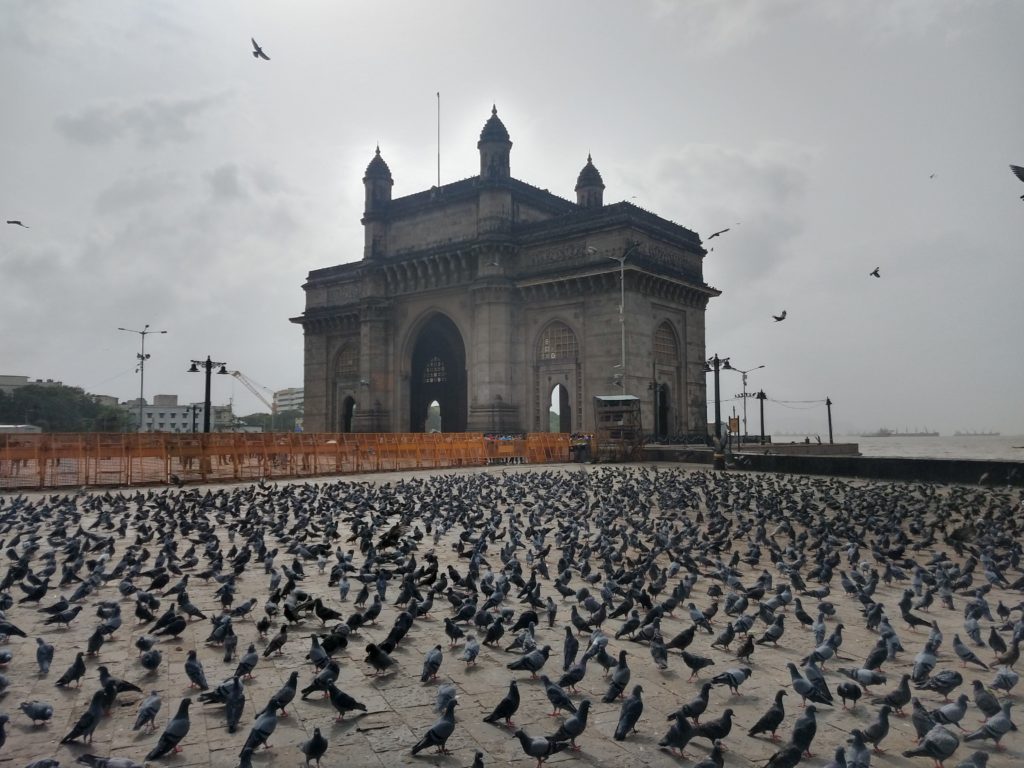
The delights of Mumbai
India is the country in the world where we have eaten the best food! Each region and each community cooks differently, the cuisine is incredibly varied and delicious. We encourage you to taste as many dishes and snacks as possible in our article: 7 tips for visiting India. Although the portions are often very large, try to always keep space for succulent Indian sweets after the main meal.
Mumbai is very well known for its street food. Famous dishes from Mumbai are Vada Pav and Pav Bhaji. We got to taste panki, which is a speciality at Swati Snacks. There, we also had the chance to discover a speciality from Mumbai we had heard of and were curious about, the incredible Panipuri! You feel yourself this ball and can enjoy right after in a single bite. It is an oval, hollow and fried puri (bread) that is eaten with seasoned water (pani), tamarind chutney, chilli, a mixture of spices, potatoes, onions and chickpeas. Attention must be paid to the establishment where it is consumed due to the presence of unboiled water which must be potable.
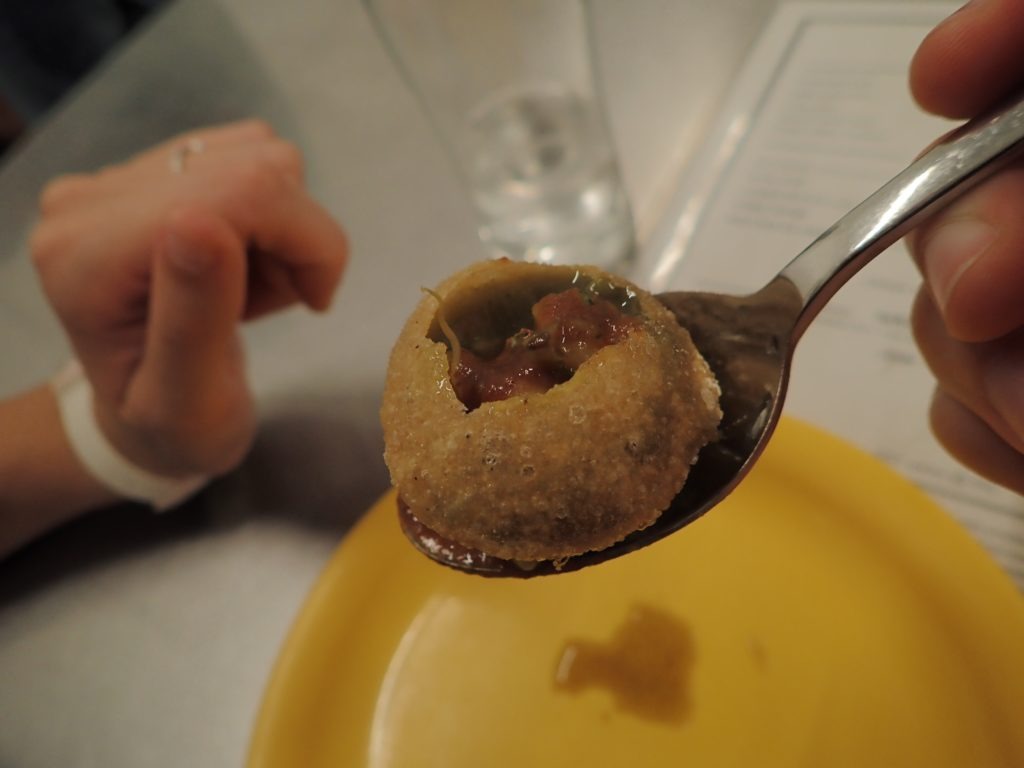
During our stay in Mumbai we also tested the following restaurants: Oye Kake Veg Restaurant, the chain restaurant B Bhagat Tarachand and the Sahakari bhandar cafe.
In general, during your stay in India we advise you not to fail to taste: lassis, dosas, koftas, biryanis, thalis or parathas (and everything which looks tasty to you / everything that is recommended to you).
Finally, we took the metro to the impressive open-air laundromat in Dhobi Ghat and then the taxi to the Chhatrapati Shivaji Terminus station. This station, one of the most active in India, is a historic building listed as a UNESCO World Heritage.
With our friends, we went through the markets, it is also a tour offered by Magic Mumbai – Mumbai Bazaar Walk. So while walking in the district of Bhuleshwar we walked through: the Zaveri Bazaar market, and markets for flowers, fabrics, offerings as well as also jewellery stores (selling real and fake god and silver) , Hindu temples, observe Jain temples from the outside as well as mosques and even a cow sanctuary (unfortunately quite sad to see).
We also spent a day on Elephanta Island, located in the bay of Mumbai, by taking a boat from the gate of India. There, we booked a guide to have explanations (very interesting) on the impressive caves dug in the rock. We also climbed to the top of the island to enjoy the view on the bay. However, the many monkeys on our way worried us a little. Finally, in the evening we went to the beach at Juhu Beach to relax.
Where to stay in Mumbai?
Mumbai is a gigantic city which had more than 24 million inhabitants in 2019. We stayed in 2 different districts: in the south in the district of Colaba where most of the tourist attractions are located and in the west in Branda a residential area rather popular with Bollywood stars.
Visit Bollywood cinema studios
The word Bollywood comes from a mixture of Bombai (the colonial name of Mumbai) and Hollywood. This is the huge Indian film industry, which gives a lot in romance and includes many colourful and dynamic songs and dances. During our two weeks stay in India we went to the cinema twice. It was in Hindi without subtitles but for this kind of movies it doesn’t feel essential to understand ever single word to have a good time and enjoy the atmosphere.
Once in Mumbai, we hoped to get noticed by a producer to be an extra in a movie. Indeed, all the studios are located around the city and we even hang out on purpose in the historic Leopold Cafe. According to blogs and press articles being in the right place at the right time it is possible to be recruited, but again watch out for scams. It was, however, unsuccessful for us.
In desperation, we toured the studios. An incredible experience where we had the chance to watch a live filming. We also discovered the background of this glamorous industry and … it is dirty!
If the industry interests you, we recommend you to visit the SJ studio and entertainment LTD studios with Bollywood For All Tours. We spent an incredible afternoon with Rahil. On the program: we attended a live shooting, visited the sets, the make-up rooms, dressed up, attended a dance performance and we learned more about the techniques of special effects and sounds. Throughout the tour we participated, danced, shot a mini-film and even sang in the recording studio. We were able to attend the shooting of the series Yeh Hai Mohabbatein and meet the big star Sudha Chandran. For more information, you can contact Rahil on WhatsApp at +91 97677 29782.
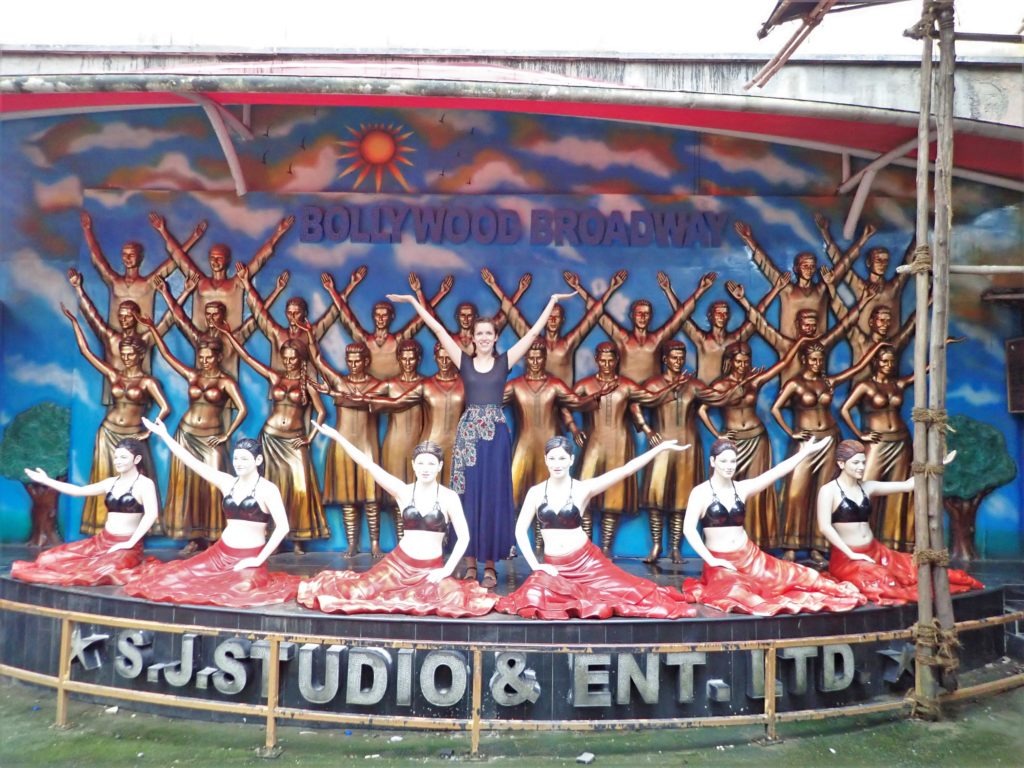
Bollywood movies selection
- Queen (2014) is the story of a young girl from Delhi who decides to leave alone for her honeymoon in Paris and Amsterdam after her fiancé cancelled their wedding last minute. A superb film, for our own wedding we danced on the popular song Queen: London Thumakda.
- 3 idiots (2009), the first Bollywood we watched, is a beautiful film about a group of three friends and the stress they undergo to succeed in their challenging studies. This satire on the Indian education system social pressure is moving and opened our eyes to this subject.
- The Lunch box (2013), a favourite for the Cannes festival, immerses us in the incredible lunch delivery system in offices around Mumbai. The women are preparing meals for their husbands who are brought (still warm) to their office desks by delivery men on bicycles, afterwards they even collect back the empty dishes. Single men order from restaurants. This whole system works without an ounce of IT and the deliverers remember everything by heart. Mistakes are extremely rare, but one of them will lead to a love story.
- The historic movie Jodhaa Akbar (2008) was shot in Rajasthan and partly at the Amber fort.
We went to the cinema twice in India: at Sterling in Mumbai and at the INOX City Plaza in Jaipur. It takes between 150 and 200 INR for the ticket.
Clémentine’s India reading list
- The Lonely Planet travel guides Rajasthan, Delhi & Agra and Goa & Mumbai.
- Shantaram by Gregory David Roberts is the true story of the author: an Australian fugitive who takes refuge in the slums of Mumbai and lives there incredible adventures.
- Salman Rushdie’s Midnight Children, between the Baroque novel and a political pamphlet, which has received numerous awards.
Finally, read our 7 travel tips for India first-time visitors in our blog article as well as more ideas to discover others, not as well know, part of India.
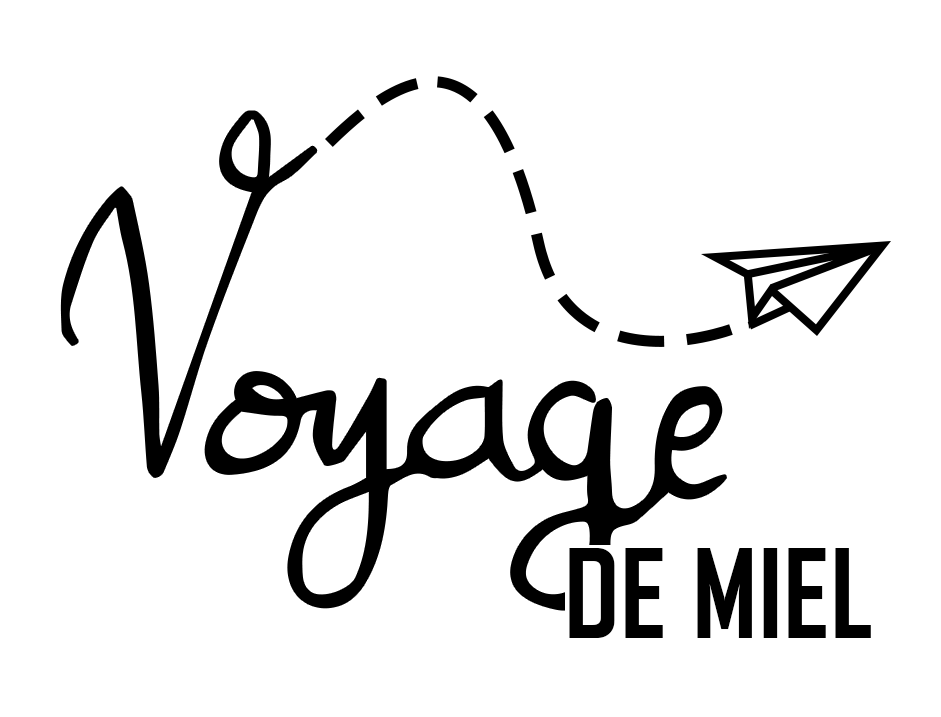
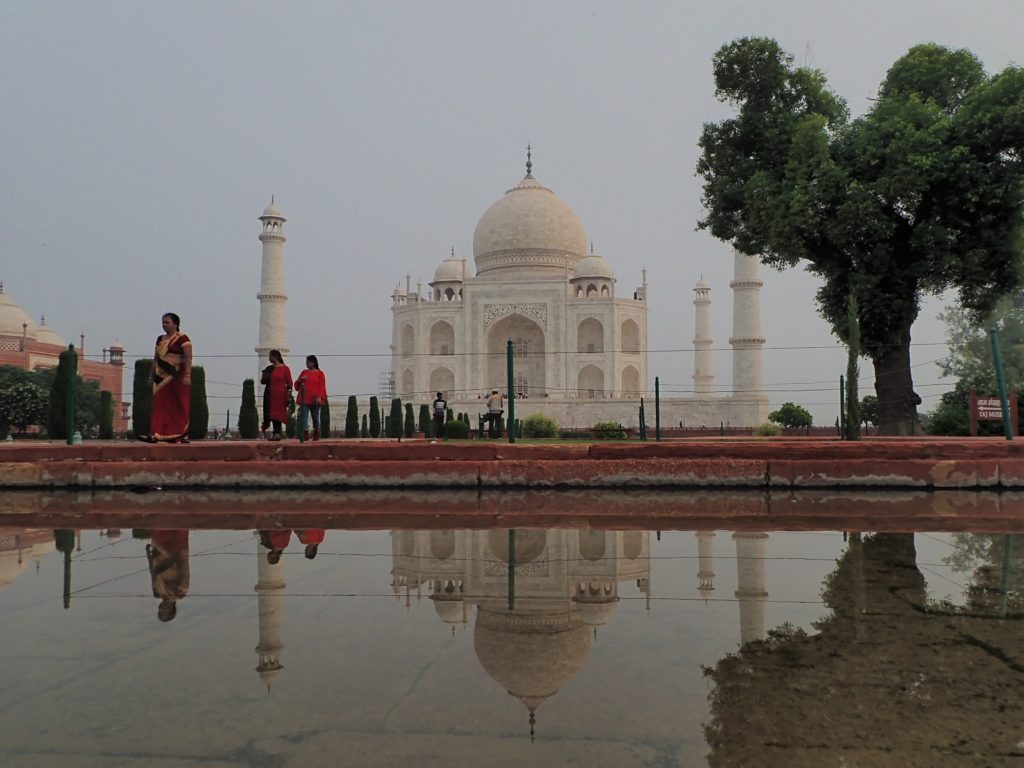
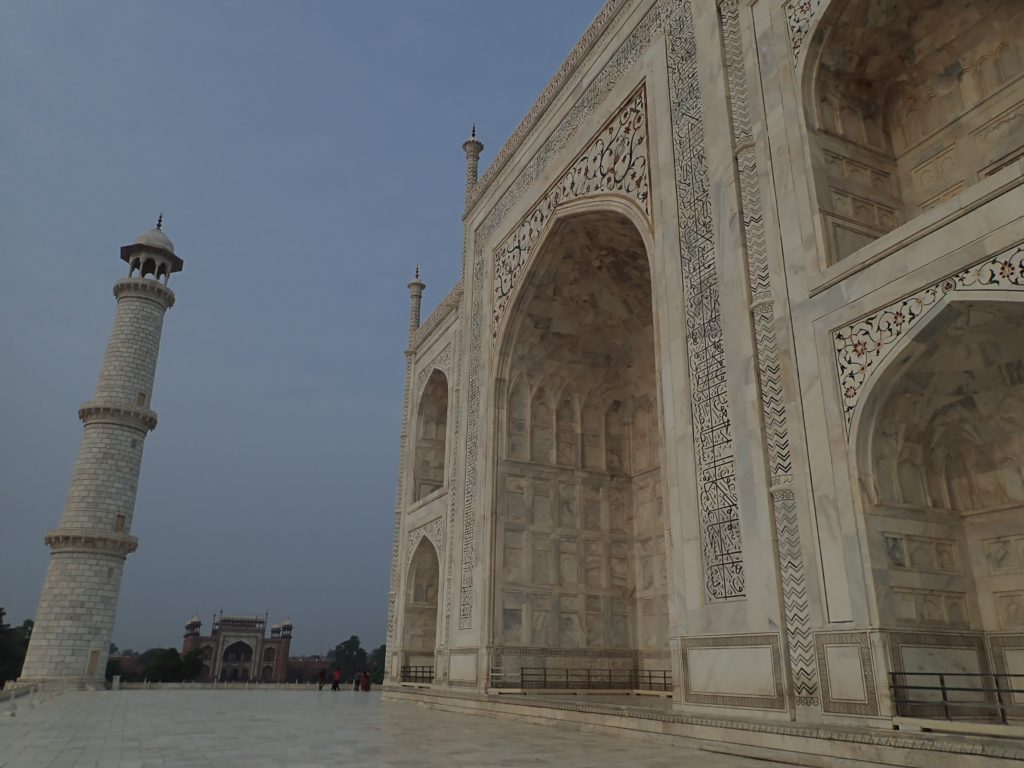
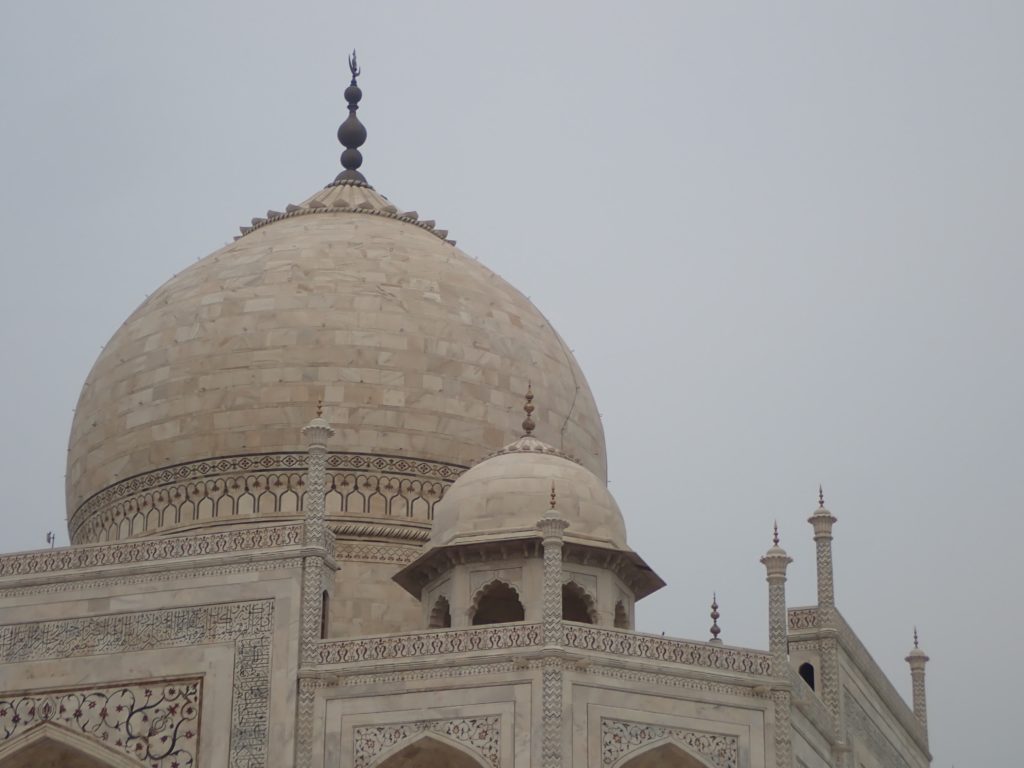
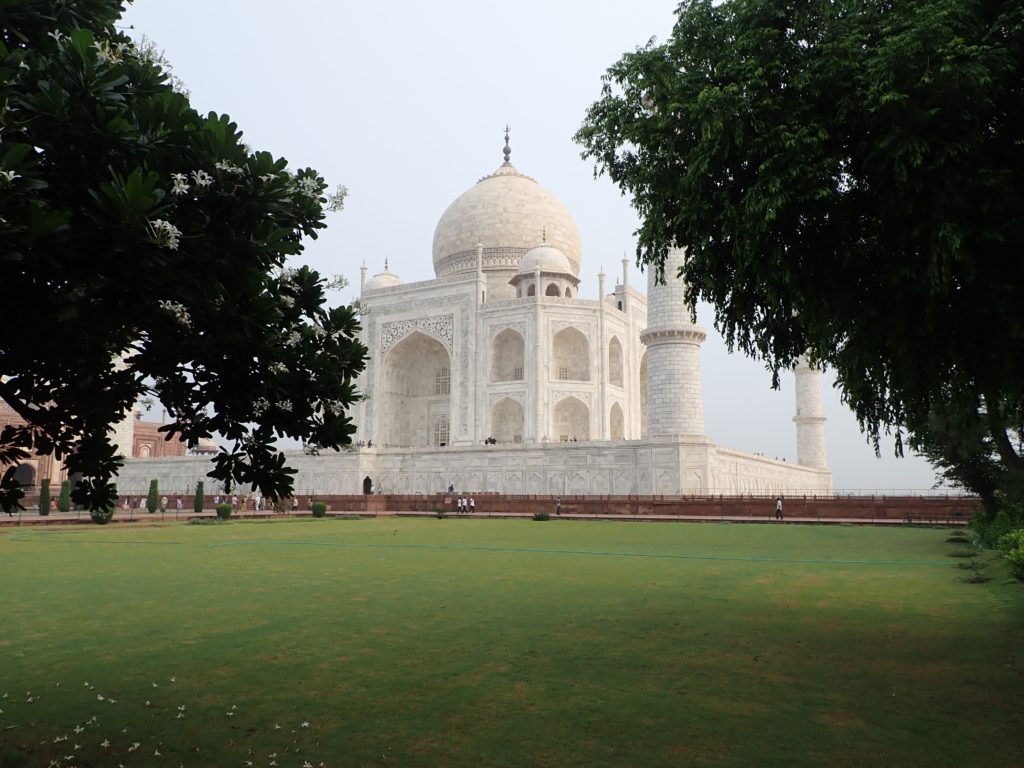
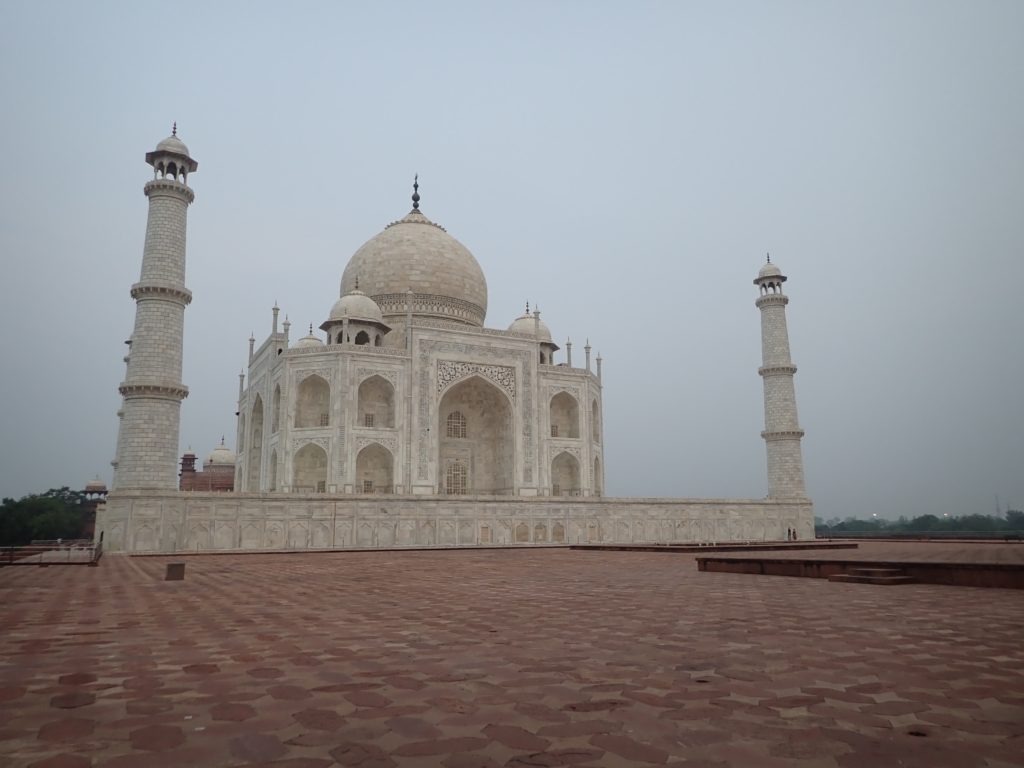
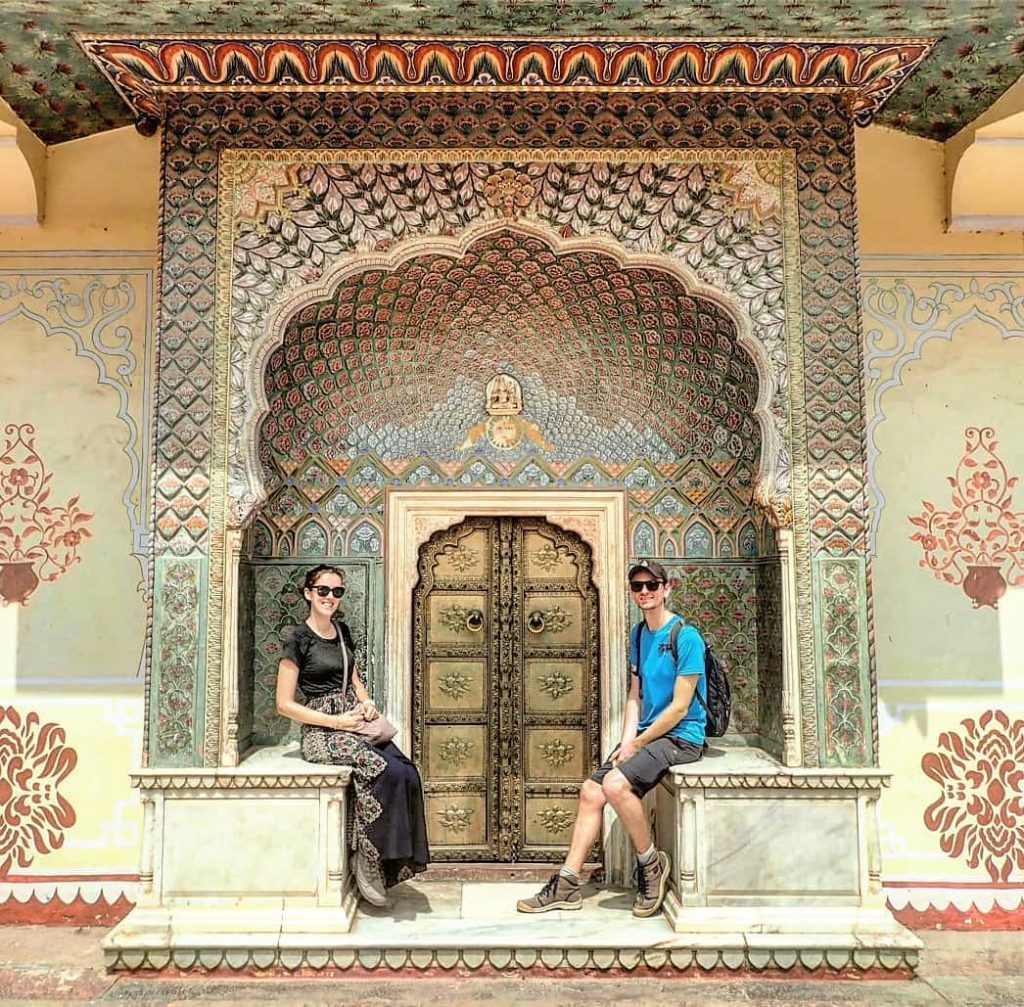
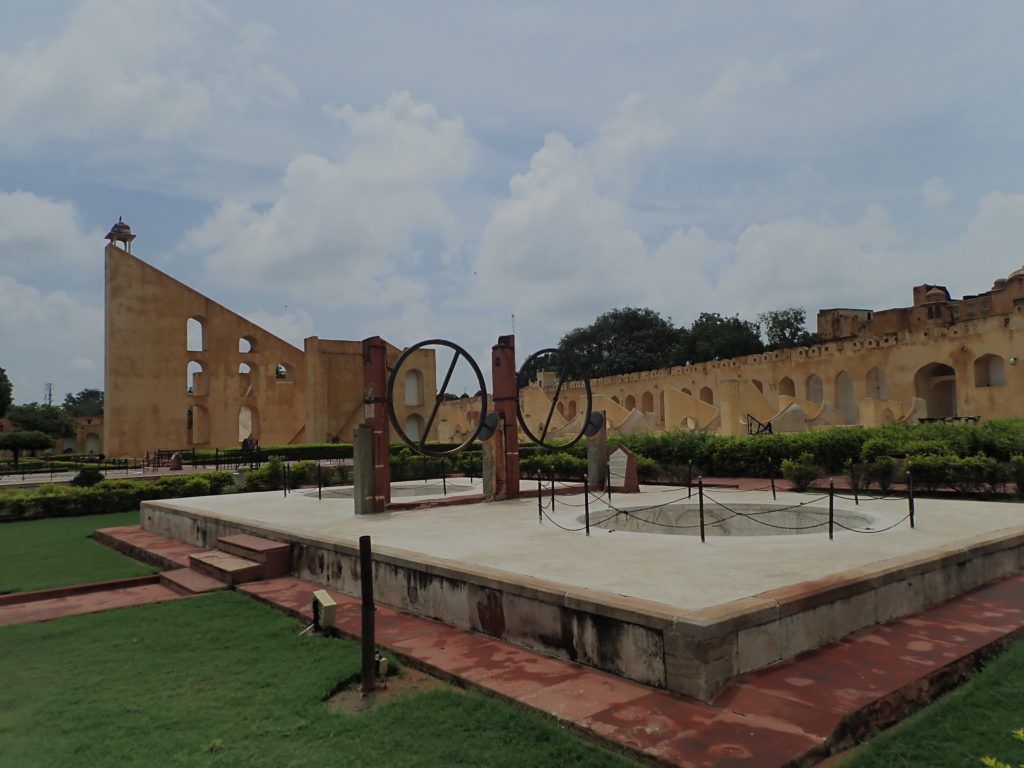
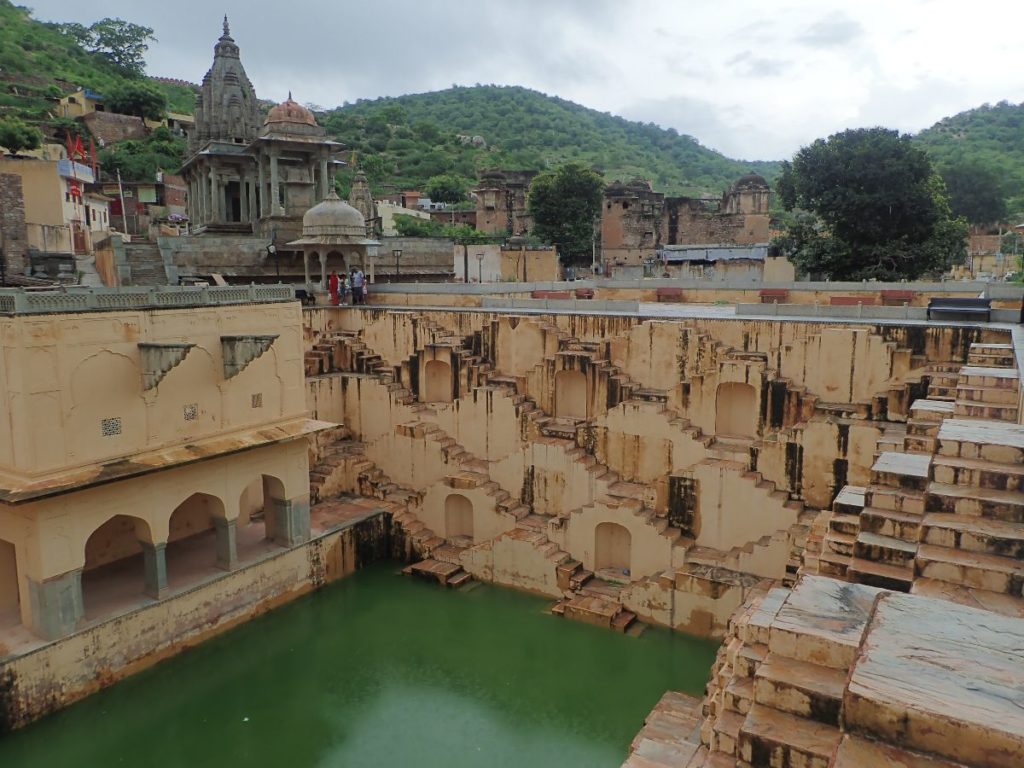
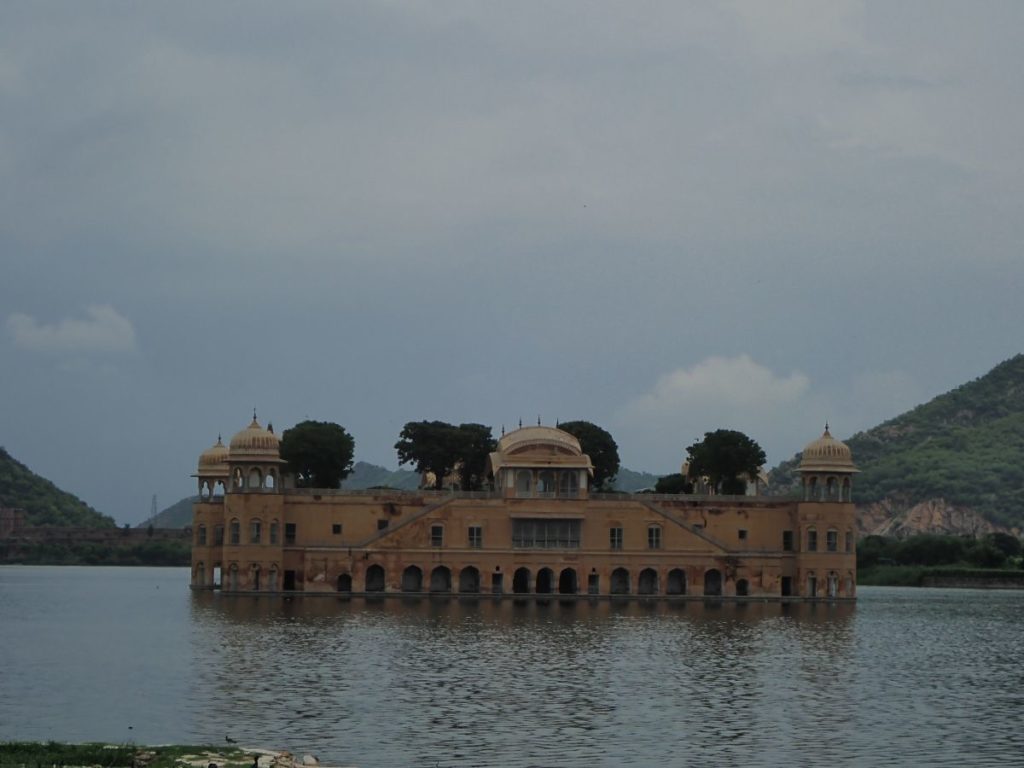
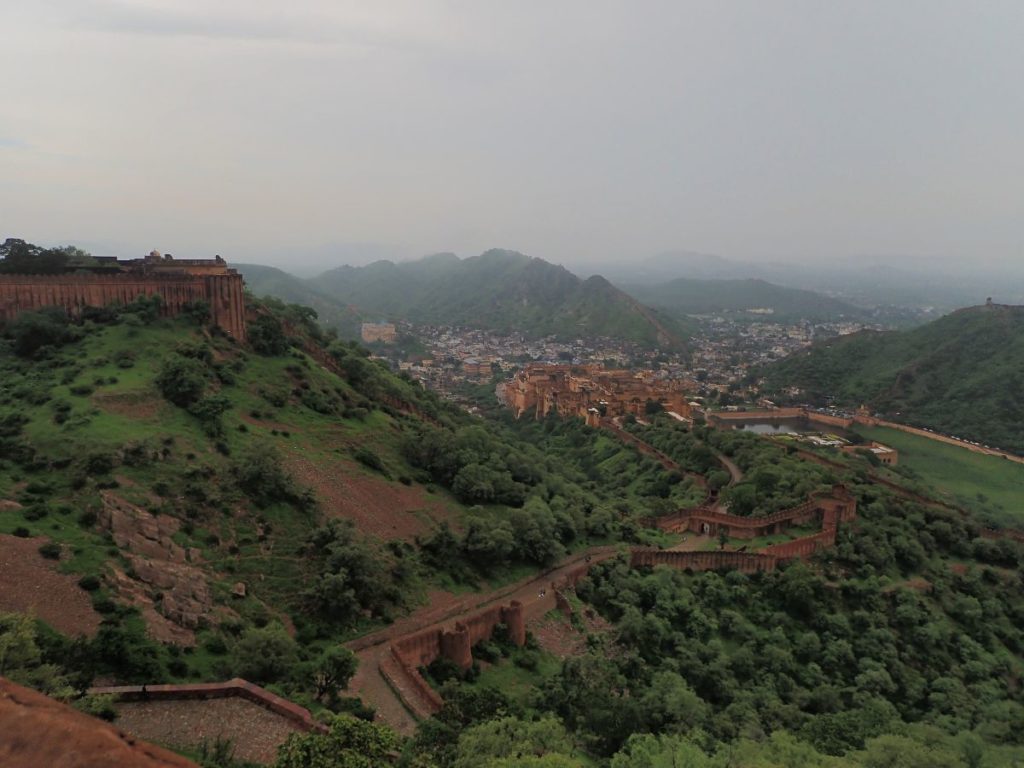
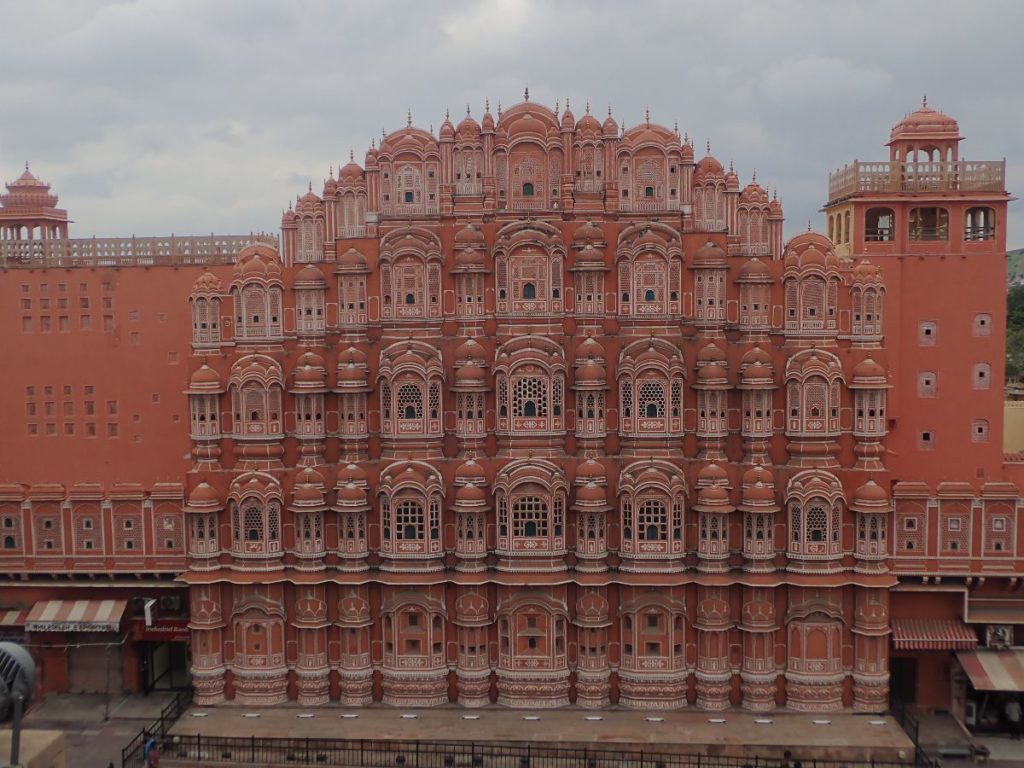
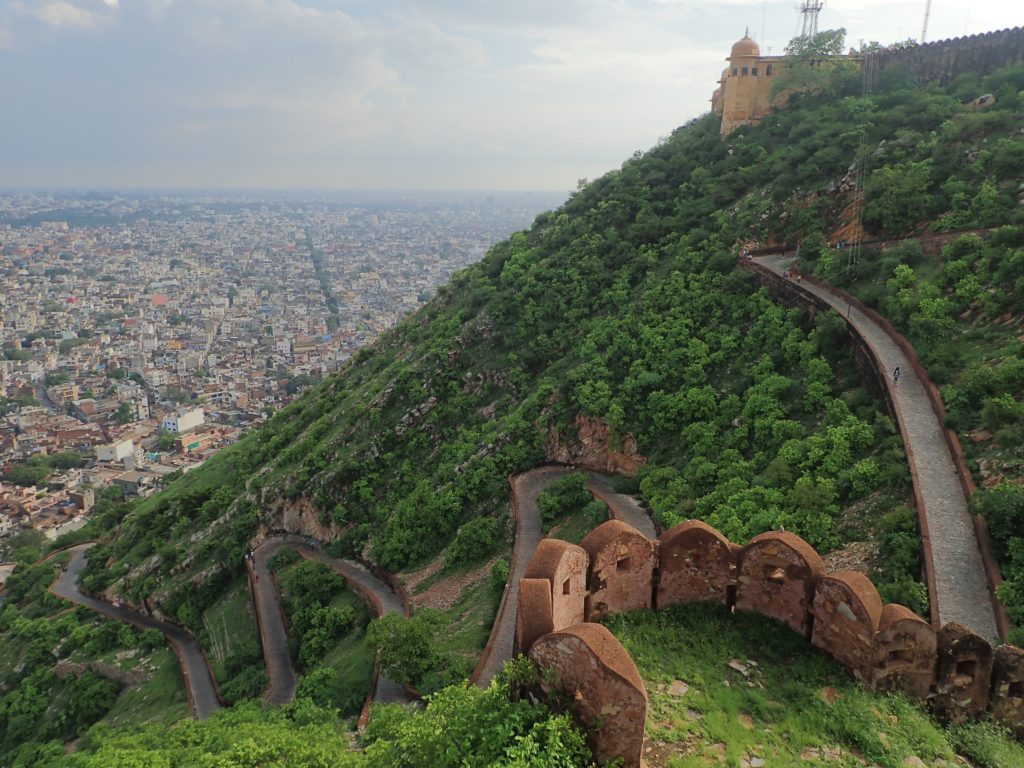
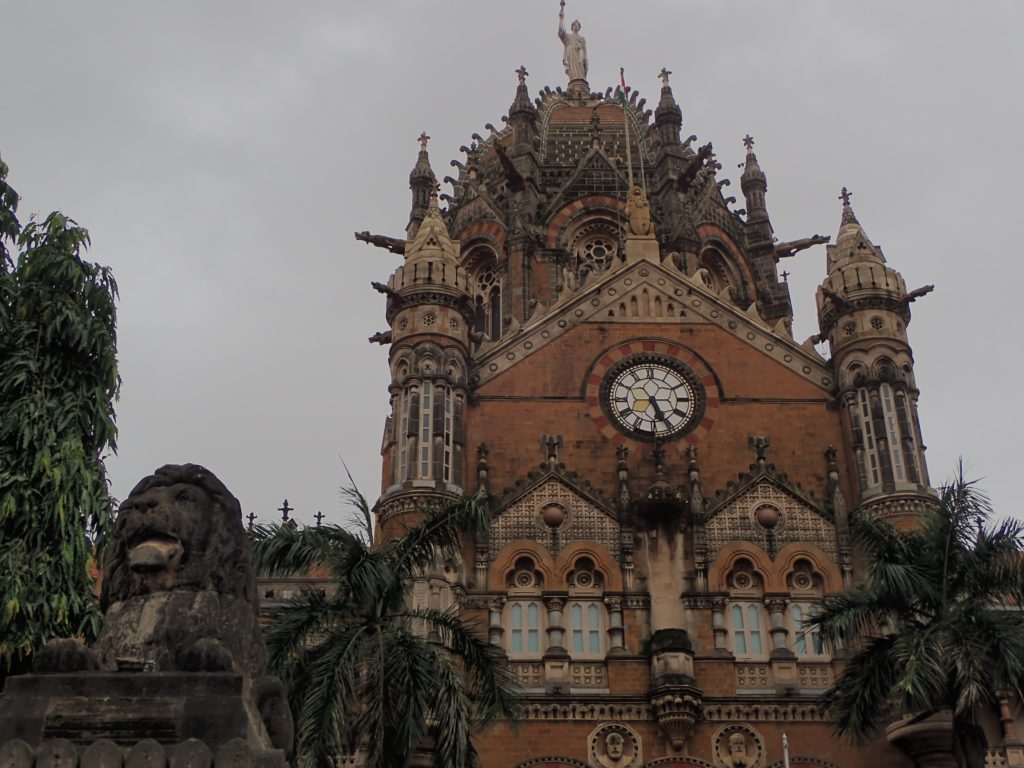
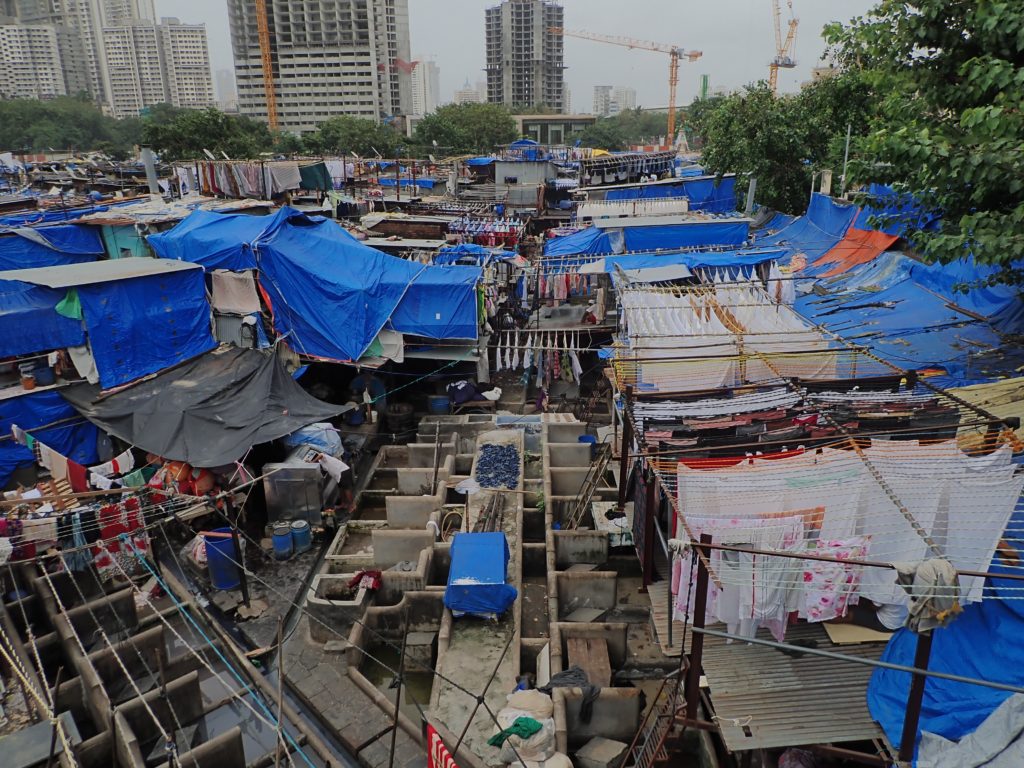
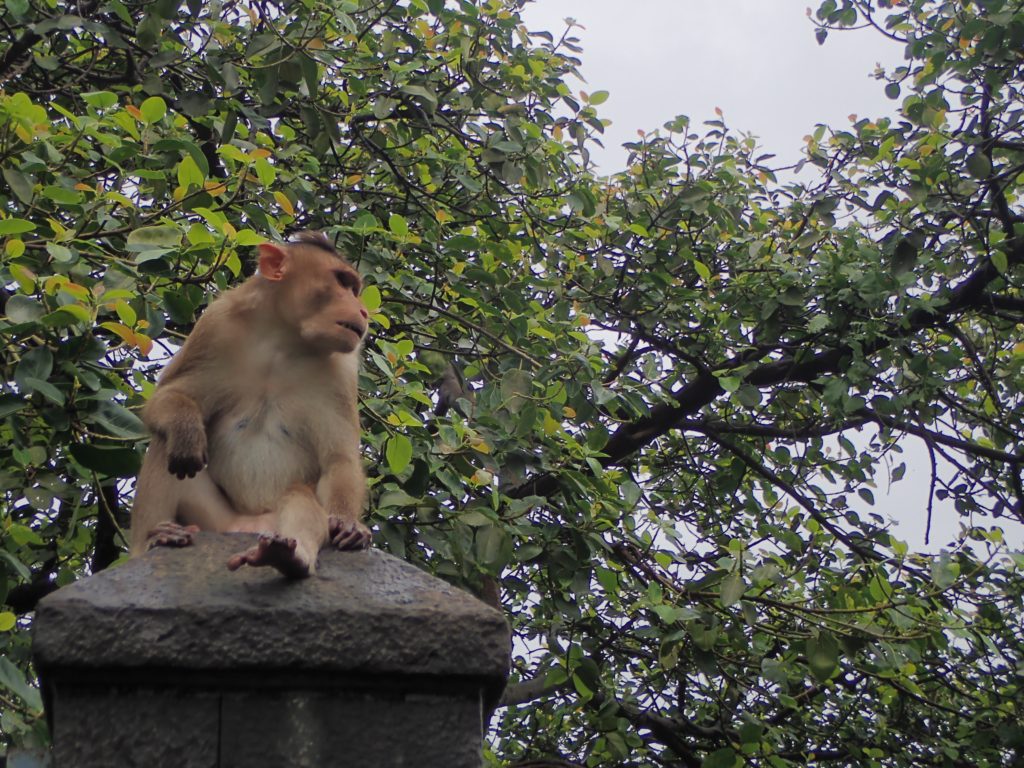
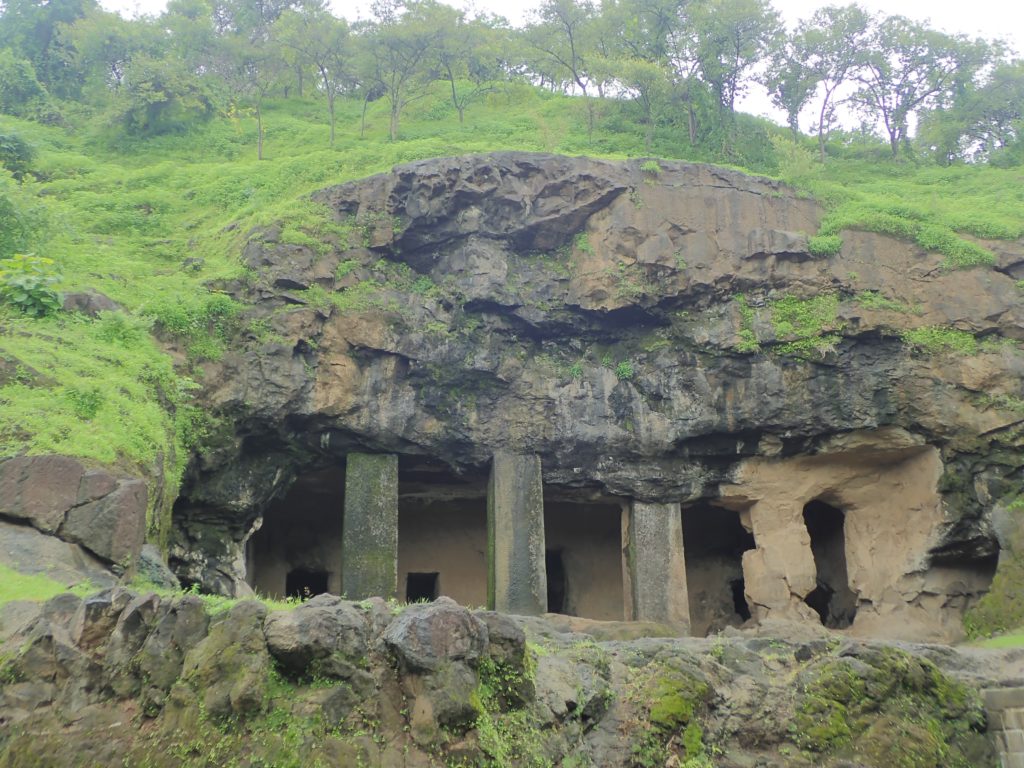
2 Comments
Rahil Khan
April 14, 2020 @ 11:40
Thanks for writing such an informative and helpful blog. It will help travelers immensely. One suggestion would be to make Mumbai your starting point instead of DELHI so that travelers get less of a culture shock and can get used to INDIA a bit more gradually and easily.
Happy travels. It was a great pleasure to meet you both wonderful people and spend the day with you at the Bollywood Studios.
Thanks so much.
Best wishes.
Rahil Khan.
Voyage de miel
April 14, 2020 @ 11:44
Many thanks for your lovely feedback. You are making a really good point and indeed it would have been much easier to start from Mumbai.
Best wishes,
Clémentine & Nicolas